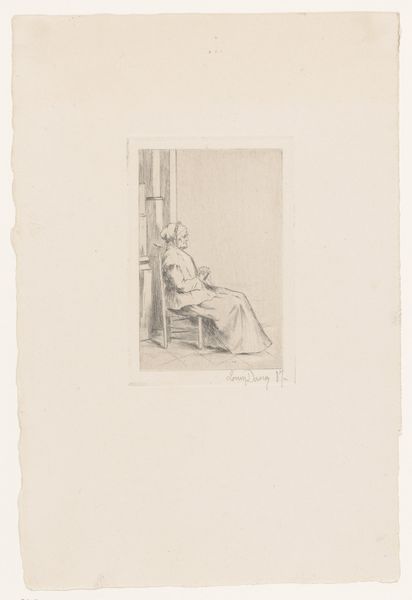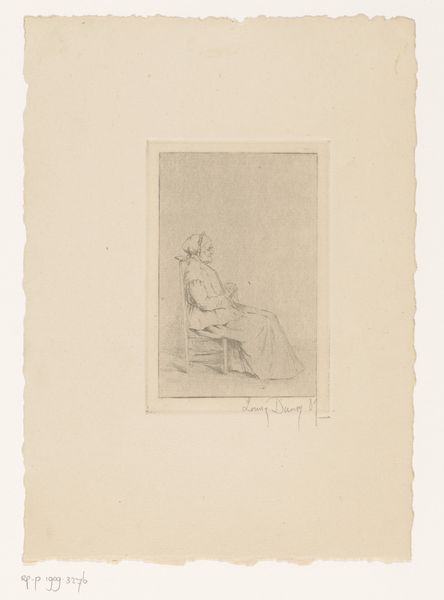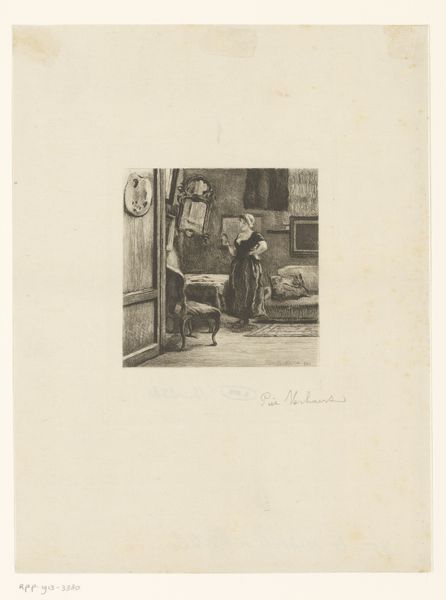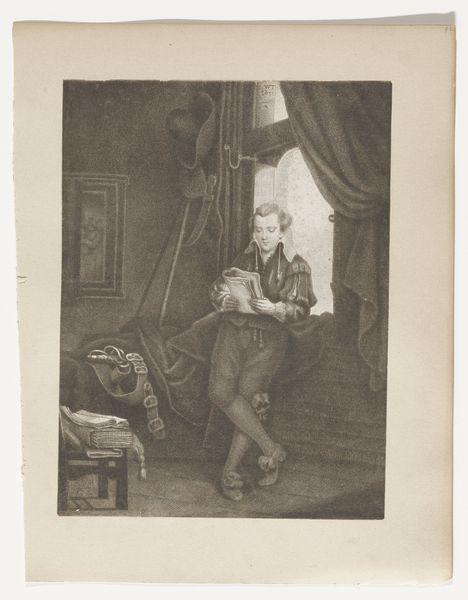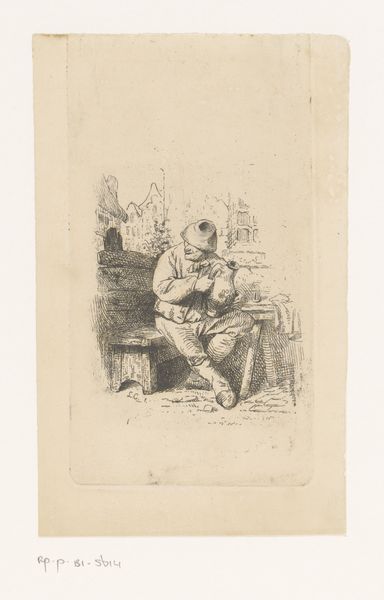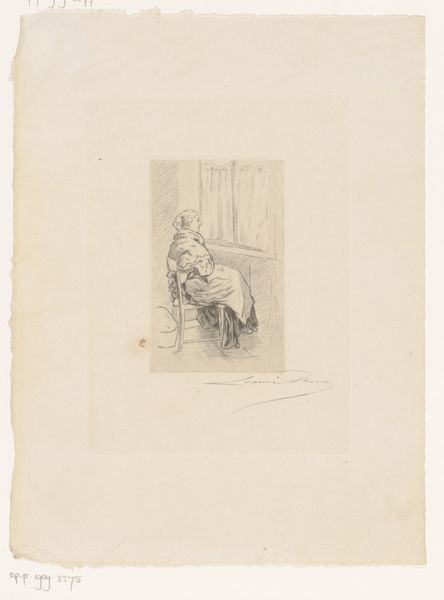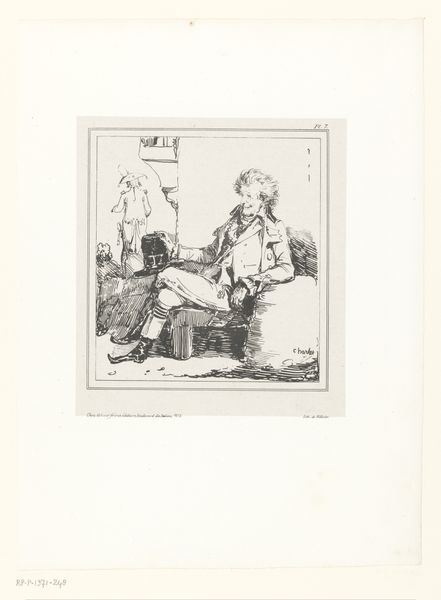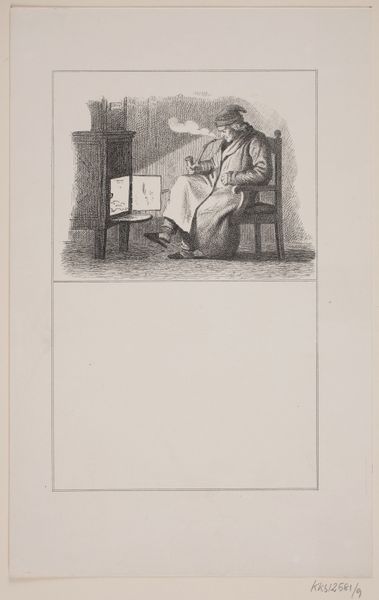
paper, engraving
#
portrait
#
neoclacissism
#
paper
#
genre-painting
#
history-painting
#
academic-art
#
engraving
#
realism
Dimensions: height 196 mm, width 259 mm
Copyright: Rijks Museum: Open Domain
Curator: So, here we have "Portrait of John Holt," an engraving on paper by H. Rogers, dating back to 1809. Editor: The scene seems really intimate; he's caught in a quiet, personal moment in his domestic sphere, amidst the books. How do you interpret this work in terms of its historical context? Curator: Absolutely, this domestic setting is crucial. Think about the rise of the middle class in the 19th century and how that transformed ideas about family, privacy, and leisure. The portrait commemorates John Holt, who’s situated in his space; this tells us how this period shaped identity and gender roles. Notice his attire and surroundings – how do these elements speak to ideas of wealth, class, and masculinity? Editor: He seems relaxed and intellectual. He’s not presented as a politician or soldier, as were common. What strikes me is the emphasis on him as a private individual, defined by his intellect. Curator: Exactly! Rogers is subtly participating in a reframing of masculinity. John Holt isn’t powerful because of military or political might; he's powerful because of knowledge, intellect, and self-possession. This print circulated widely, disseminating a certain vision of manhood to the public. This wasn't necessarily a universally accessible ideal, though. Who might be excluded from this vision of cultivated leisure? Editor: Hmm, possibly the working classes who would have little opportunity for leisure. Also, possibly women whose roles were typically domestic and weren't always afforded opportunities to engage with intellectual pursuits. Curator: Precisely. And how does understanding those exclusions impact your viewing experience now? Editor: It’s a reminder that even intimate scenes like these are shaped by broader forces of class and gender, offering both visibility and, often, invisibility, to certain social groups. Curator: I think it prompts a crucial self-reflexivity, and forces a conversation to bridge contemporary theories to these historic artistic interpretations. Editor: Thanks! I'll look into Rogers and how his portrait fits into these narratives.
Comments
No comments
Be the first to comment and join the conversation on the ultimate creative platform.
